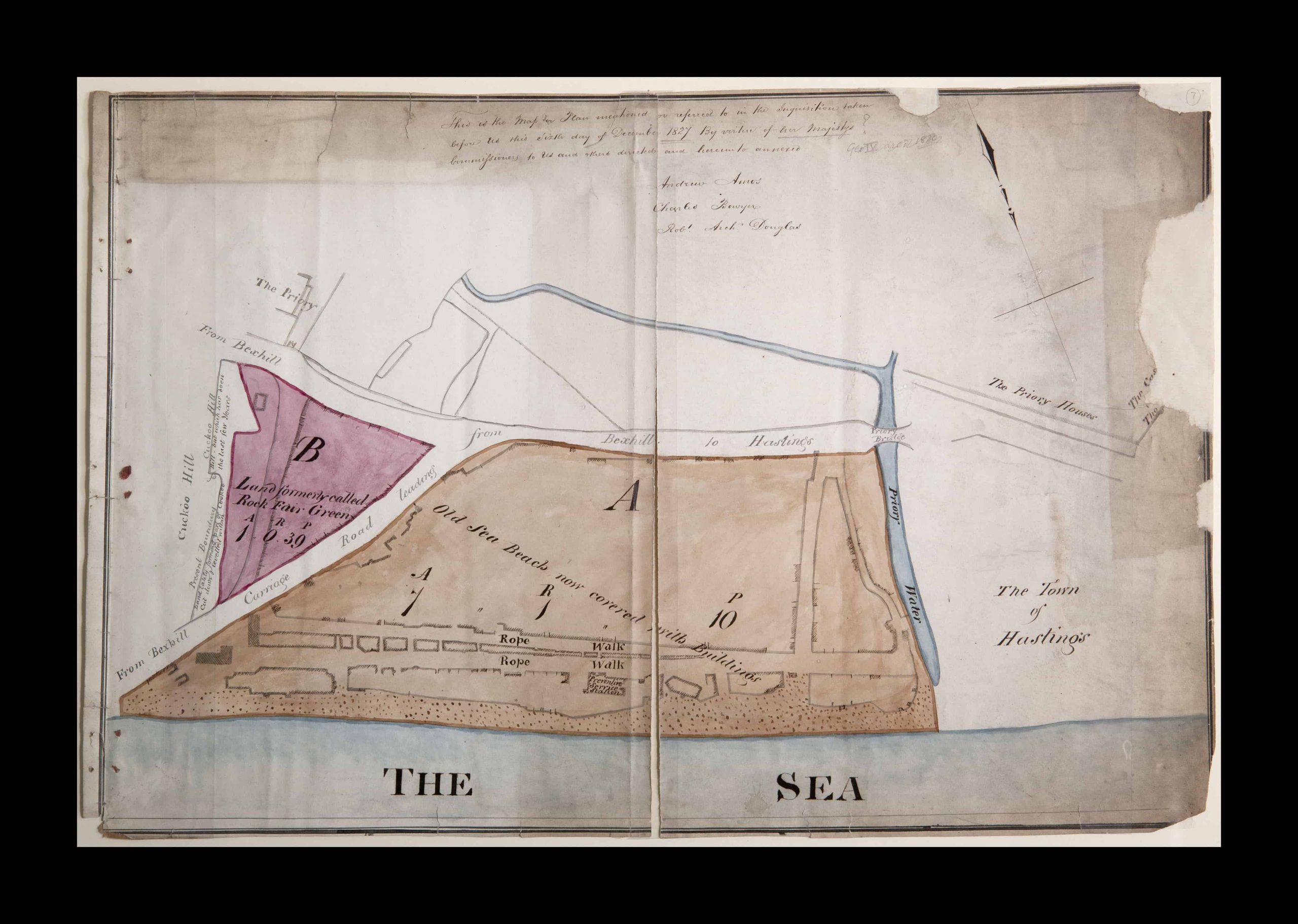The America Ground

Julie Gidlow, 15 July 2020
For a brief period of time, the residents of a small part of Hastings enjoyed the freedom and liberty that came with living outside the jurisdiction of the town corporation. Fiercely independent, they resisted all attempts by the town to control them, at some point reputedly going so far as to hoist the American “Stars and Stripes” as a sign of defiance and thus earning the area’s name – The America Ground.
This area now incorporates the Queen’s Hotel, Robertson Street and Claremont but it had originally been a Saxon port, with the town settlement sitting slightly to the west of the modern centre and extending towards White Rock. A series of storms in the 13th century effectively silted up this natural harbour, and damaged the Priory, which sat near the junction of the present day Cambridge Road and Cambridge Gardens. The town’s population moved over Castle Hill to a new site that is these days known as The Old Town. The land to the west of the Priory Bridge was abandoned and left outside the control of the “New Borough” of Hastings.
Over the course of a couple of hundred years, a shingle bank was formed where once there had been sea. This gradually solidified until, by the end of the 18th century, it was strong enough to take buildings. It wasn’t long before entrepreneurial merchants and traders started to set up warehouses and businesses on this land, one of the first being a rope-walk on what would become the area’s main thoroughfare.
Alongside the warehouses for tallow, rope and coal there was a sawing house, tallow factory, piggeries, a slaughterhouse and butchers, even a school. The residents included merchants, carpenters, bakers, brewers, fishermen, shipwrights, builders, a plumber, a confectioner, a publican and a postman. Estimates indicate that roughly 1,000 people called The America Ground home. Some of the original dwellings were little more than shacks, made out of upturned boats, but it wasn’t long before proper houses started to be constructed in brick or stone, with timber buildings reserved for workshops or animal containment. The borough of Hastings liked to paint the inhabitants as lawless and immoral, but in reality they seem to be ordinary folk just trying to make a living, carrying out whichever trade they were born to, grasping an opportunity to live and work without expensive rents or rates to pay.
Tensions between the borough and the community increased as the town started to expand westwards again. Land was very much at a premium, and towns such as Hastings were starting to attract the aristocracy and gentry who were encouraged to come to the sea for its recuperative qualities. Wellington Square and the Castle Hotel were built in 1815 and 1818 respectively, with Pelham Crescent following in the 1820s. The Breeds family, who occupied much of The America Ground, were among the leading developers of the expanding town. The ownership of the reclaimed land that had once been sea started to be called into question, with Lord Chichester (who held the Castle lands) and the Hastings Corporation laying initial claim to it. The government seems to have been made aware of it when the validity of some title deeds was questioned. The Crown duly sent Commissioners to undertake an inquiry, which took place at Battle on the 6th December 1827. The five commissioners and twelve jurymen quickly found in favour of the Crown, on the basis that the lands had once been sea and therefore belonged to the King. Their closing notes in the case show that they were very aware that they had secured a valuable Estate for the Crown.
The residents of The America Ground were allowed to remain on the site for another seven years, during which they were expected to pay rent (the Breeds family seem to be one of the few who actually paid). In 1835, those still remaining were given notice to quit, whereupon several houses were dismantled and moved to a new site just outside the boundary of James Burton’s new development of St Leonards. Some of these houses can still be seen today in Norman Road, North Street and Shepherd Street.
The land lay derelict for more than ten years until 1849, when Patrick Robertson was granted a 99-year lease to develop the area. He completed his scheme in five years, resulting in an estate that is largely of one style. This makes it a good example of a mid-Victorian streetscape that is largely unchanged from his time.
Work with us.
We create our projects with real people and places in mind. We like to work with our clients, our partners, our participants to develop original and distinctive work.
Give us a call to get started.
